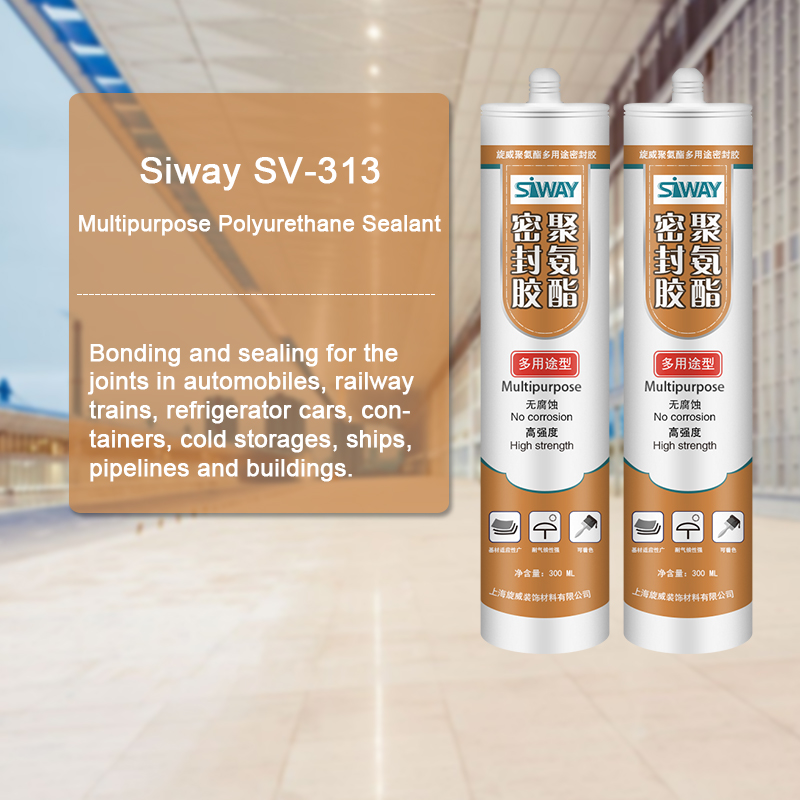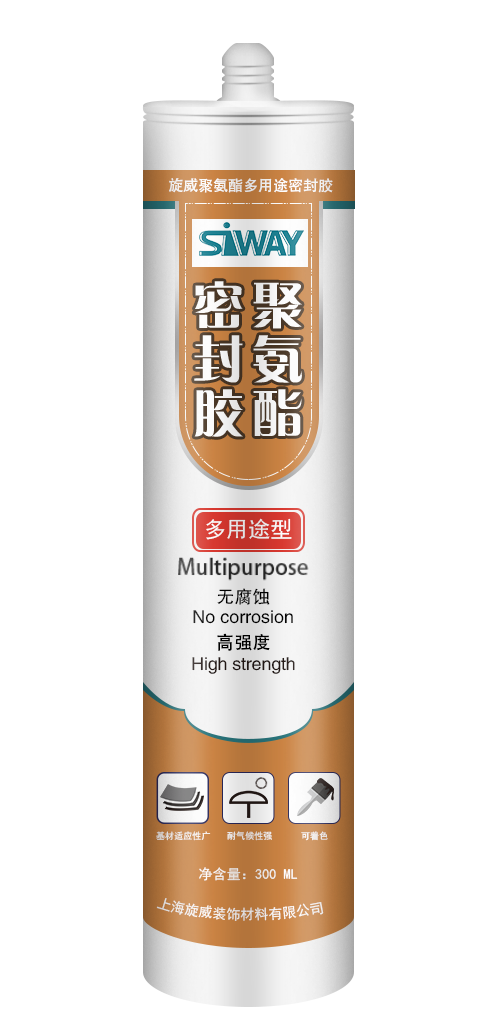2017 Latest Design SV-313 Multipurpose Polyurethane Sealant Export to Hongkong
Short Description:
Description SV-313 is one-component, room temperature curing polyurethane sealant with good adhesive property. It has many advantages such as high strength, good elasticity, aging resistant, vibration exhaustion resistant, low temperature resistant, paintable and convenient to use, etc. Where to use Bonding and sealing for the joints in automobiles, railway trains, refrigerator cars, containers, cold storages, ships, pipelines and buildings. Characteristic a. Fast curing under r...
abide by the contract", conforms to the market requirement, joins in the market competition by its high quality as well as provides more comprehensive and excellent service for clients to let them become big winner. The pursue of the company, is the clients' satisfaction for 2017 Latest Design SV-313 Multipurpose Polyurethane Sealant Export to Hongkong, Welcome to contact us if you are interested in our product, we will give you a surprice for Qulity and Price.
Description
SV-313 is one-component, room temperature curing polyurethane sealant with good adhesive property. It has many advantages such as high strength, good elasticity, aging resistant, vibration exhaustion resistant, low temperature resistant, paintable and convenient to use, etc.
Where to use
Bonding and sealing for the joints in automobiles, railway trains, refrigerator cars, containers, cold storages, ships, pipelines and buildings.
Characteristic
a. Fast curing under room temperature , no sagging, solvent free
b. High adhesive strength, wide application range for base materials
c. Good chemical and water resistance
d. Excellent aging resistance
e. Excellent noise, vibration and impaction resistance
f. Good damp resistance and anti mildew
g. Paintable, abrasionable
Technical Data
| Item | Index | Test method | |
| Appearance | Grey, White paste | Black past | By eyes |
| Hardness, Shore A | ≥35 | ≥45 | GB/T 531.1-2008 |
| Sagging, mm | ≤3.0 | No | GB/T 13477.6-2002 |
| Solid content, % | ≥95 | ≥96 | GB/T 2793-1995 |
| Tack free time, Min | ≤120 | ≤60 | GB/T 13477.5-2002 |
| Curing rate, mm/24h | ≥3.0 | ≥3.0 | |
| Shear strength, Mpa | ≥0.8 | ≥2.0 | GB/T 7124-2008 |
| Tensile strength, Mpa | ≥1.5 | ≥2.5 | GB/T 528-2009 |
| Elongation at break,% | ≥450 | ≥400 | GB/T 528-2009 |
| Tensile strength at 100%, Mpa | ≥1.0 | ≥2.0 | GB/T 528-2009 |
| Tear strength, N/mm | ≥5.0 | ≥5.0 | GB/T 529-2009 |
Color
White, black, grey
Package
300ml plastic cartridges and 600ml in sausage
Shelf life
9 months
Note
If you want the TDS or MSDS or other details, please contact with our sales person.
What is RTV SILICONE? What does RTV SILICONE mean? RTV SILICONE meaning – RTV SILICONE definition – RTV SILICONE explanation.
Source: Wikipedia.org article, adapted under https://creativecommons.org/licenses/by-sa/3.0/ license.
RTV Silicone (Room Temperature Vulcanization silicone) is a type of silicone rubber made from a two-component system (base plus curative; A+B) available in a hardness range of very soft to medium – usually from 15 Shore A to 40 Shore. RTV silicones can be cured with a catalyst consisting of either platinum or a tin compound such as dibutyltin dilaurate. Applications include low-temperature overmolding, making molds for reproducing, and lens applications for some optically clear grades.
To produce the material, the silicone rubber is mixed with the curing agent or vulcanizing agent. Usually the mixing ratio is a few percent. In order for the RTV silicone to reproduce the surface texture, attention is paid to the cleanliness of the original. Vacuum deairing removes entrained air bubbles from the mixed silicone and catalyst to ensure optimal tensile strength, which affects reproduction times. In casting and mold making, RTV silicone rubber reproduces fine details and is suitable for a variety of industrial and art related applications including prototypes, furniture, sculpture and architectural elements. RTV silicone rubber can be used to cast materials including wax, gypsum, low melt alloys/metals and urethane, epoxy or polyester resins (without using a release agent). A more recent innovation is the ability to 3D Print RTV silicones. RTV silicones’ industrial applications include aviation, aerospace, consumer electronics, and microelectronics. Some aviation and aerospace product applications are cockpit instruments, engine electronics potting, and engine gasketing. RTV silicones are used for their ability to withstand mechanical and thermal stress.
RTV silicone rubber has excellent release properties compared to mold rubbers, which is especially an advantage when doing production casting of resins (polyurethane, polyester, and epoxy). No release agent is required, obviating post-production cleanup. Silicones also exhibit good chemical resistance and high temperature resistance (205 °C, 400 °F and higher). For this reason silicone molds are suitable for casting low melt metals and alloys (e.g. zinc, tin, pewter, and Wood’s metal).
RTV silicone rubbers are however generally expensive- especially platinum-cure. They are also sensitive to substances (sulfur-containing modelling clay such as Plastilina, for example) that may prevent the silicone from curing (referred to as cure inhibition). Silicones are usually very thick (high viscosity), and must be vacuum degassed prior to pouring to minimize bubble entrapment. If making a brush-on rubber mold, the curing time factor between coats is long (longer than urethanes or polysulfides, shorter than latex). Silicone components (A+B) must be mixed accurately by weight (scale required) or they do not work. Tin catalyst silicones shrink somewhat, and do not have a long shelf life. Certain types of RTV release acetic acid during the curing process, and this can attack solder joints, causing the solder to detach from the copper wire.





